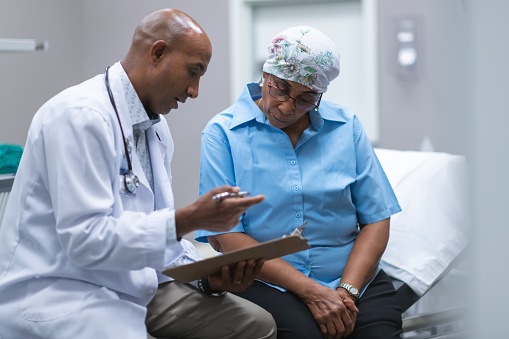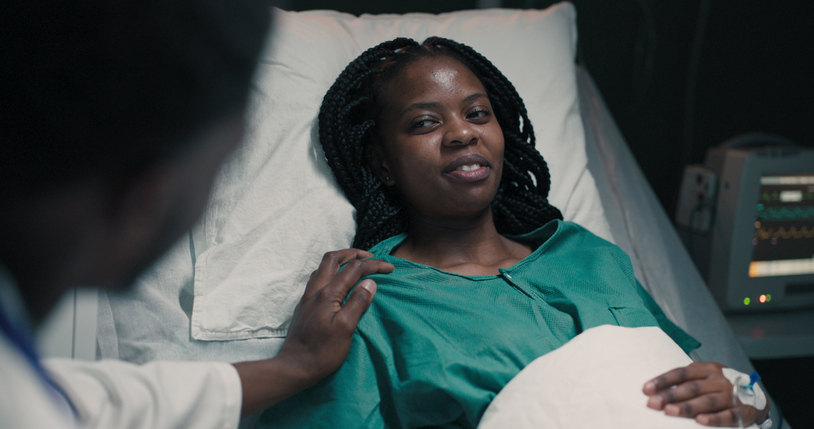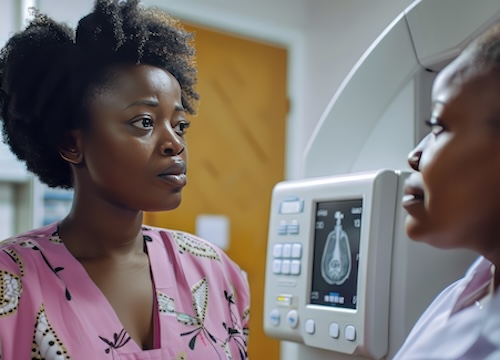
Black patients with breast cancer reported a higher symptom burden and lower distress prior to initiating chemotherapy compared with white patients, according to a study published in JAMA Network Open.
Assessing Patient-Reported Symptoms
For this observational study, the investigators assessed 1,338 patients from a single center who were diagnosed with stage I to III, hormone receptor–positive breast cancer between January 1, 2007, to December 31, 2015. All patients had symptom reports prior to beginning chemotherapy. The mean patient age was 54.6 years. Black patients made up 31.4% of participants (n = 420) and 68.6% of the study cohort (n = 918) were white. Compared to white patients, Black patients were younger and more likely to live in neighborhoods with lower average incomes ($58,091 vs. $42,167) and fewer adults with high school degrees (86.2% vs. 81.3%).
The primary outcomes were four symptom-related assessments: general physical symptoms; treatment-related adverse effects (AEs); acute distress; and despair. Intensity of symptoms was rated on a 10-point scale, with 0 being no issues and 10 being “as bad as possible.”
For the general physical symptoms, patients reported a mean of 3.2 symptoms of any severity. White patients were more likely than Black patients to report fatigue, tiredness, or weakness (66.1% vs. 53.2%), daytime sleepiness (30.4% vs. 19.2%), and trouble sleeping (53.2% vs. 44.8%). Black patients were more likely to report sweating compared with white patients (36.6% vs. 28.1%). While mean general physical symptom scores were similar overall, Black patients were more likely to have a 1.1 point higher, or worse, general symptoms score than white patients (P<0.001).
Black Breast Cancer Patients Report More AEs
White patients had less frequent treatment-related AEs compared with Black patients. Weight change occurred in 22.9% and 29.5% of white and Black patients, respectively. More Black patients reported appetite changes and taste changes than white patients. Hair loss occurred in 3.8% of white patients and 8.6% of Black patients (all P<0.001). The mean treatment AE scores for white and Black patients were 43.8 versus 44.5, with a net difference of –0.7 (P=0.02).
“The explained difference was negative, implying that, if the average Black patient had the same characteristics as the average White patient, she would have reported a 0.5-point lower mean treatment adverse effects score,” wrote the authors.
White patients were more likely to report at least three distress symptoms and had significantly higher distress scores compared with Black patients (51.0 vs. 48.5; P=0.001). There was no statistically significant difference in despair scores between white versus Black patients.
Neighborhood Income Correlates with Scores
According to the authors, “Neighborhood-level income had the most explanatory power (43.1%–93.2% of total explained difference) among the included baseline characteristics,” when accounting for differences in symptom burden.
“It is concerning that symptoms that may be exacerbated with chemotherapy were more severe at baseline among Black patients,” the authors wrote, citing higher frequency of appetite changes, weight changes, and hair loss among Black patients prior to chemotherapy. “Having higher baseline symptoms that may be exacerbated with chemotherapy may be associated with even higher symptom burden during treatment, potentially contributing to the greater treatment discontinuation rates observed among Black women.”







 © 2025 Mashup Media, LLC, a Formedics Property. All Rights Reserved.
© 2025 Mashup Media, LLC, a Formedics Property. All Rights Reserved.